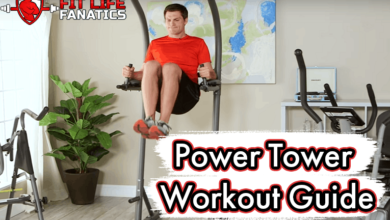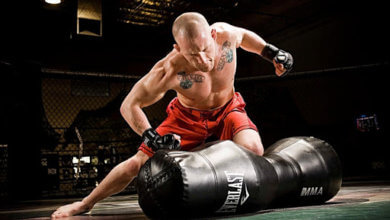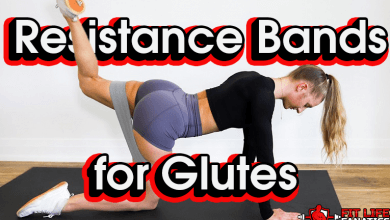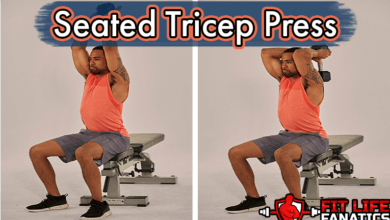Sumo squats vs Goblet Squats: Which One Is Better for You

Squats build thick-thighs and strong butts.
They are the fundamental movement to any leg workout routine.
If you're looking to add more mass to your legs, boost strength, improve functional fitness, then squats should be a staple in your workout regimen.
One of the reasons why Squats form the basis of any leg workout routine is because there are so many different variations that target different muscle groups - - be it front squats, shrimp squats, or the variations we are going to over.
The two most common squat variations are the Goblet Squat and the Sumo Squat. The Goblet Squat is a great exercise for beginners as it is a very simple movement to perform.
The Sumo Squat is a more advanced variation that targets the inner thigh muscles more, provided you do the right number of squats per day.
So, which one of these two squats is better for you? That's what we are going to find out today in our one-on-one comparison article. Let's get rolling.
What is the Goblet Squat?
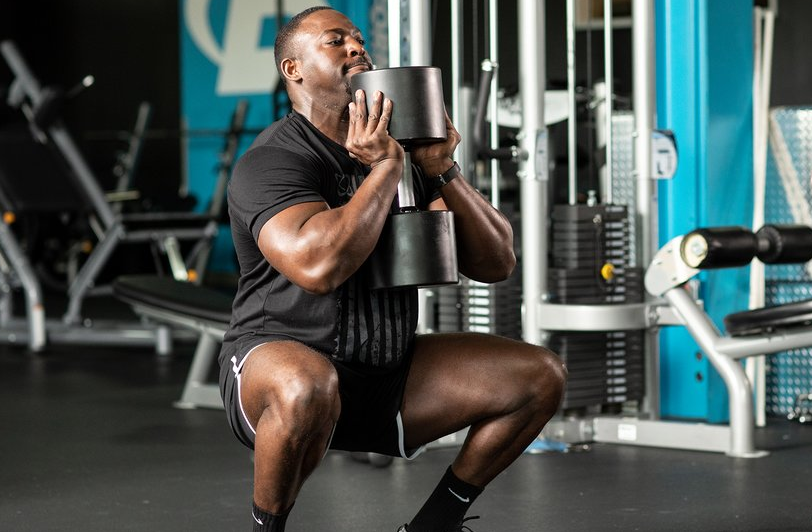
The Goblet squat is a basic squat variation that is performed with a weight held in front of the body.
This can be done with a kettlebell, a sandbag or even some affordable dumbbells.
It is a great exercise to learn how to squat correctly as it helps to hone the movement pattern and teaches you how to sit back and hinge at the hips, something that is essential for all squatting movements.
How to Perform the Goblet Squat

One of the reasons why the Goblet Squat finds favor amongst beginners is because it is such a simple movement to perform.
Here's how you do it:
Step 1 - Start by holding a weight in front of your chest with both hands (this can be a dumbbell, kettlebell, or sandbag).
Step 2 - Your feet should be shoulder-width apart and your toes pointing slightly outwards.
Step 3 - Keeping your core engaged, sit back and down into a squat position. Hinge at the waist while balancing the weights.
Step 4 - Once your thighs are parallel to the ground, drive through your heels and return to the starting position.
What is the Sumo Squat?
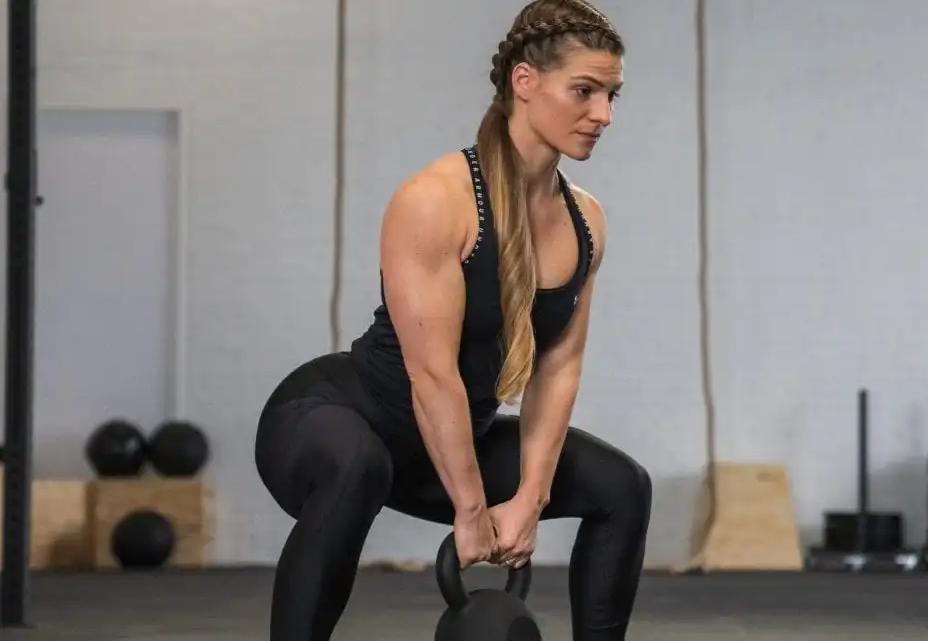
The Sumo squat is a more advanced variation of the squat that targets the inner thigh muscles more.
It is performed with your feet wide apart and your toes pointing outwards.
Just like the goblet squat, the beginner version of the Sumo squat is performed with a dumbell held in front of the body. As you progress, you can increase the weight and then eventually switch to a barbell.
To maximize your gains, you can do this as you would a smith machine squat if you want to squat and deadlift on the same day for the best results.
But do note, this is a very advanced variation of the move.
How to Perform the Sumo Squat
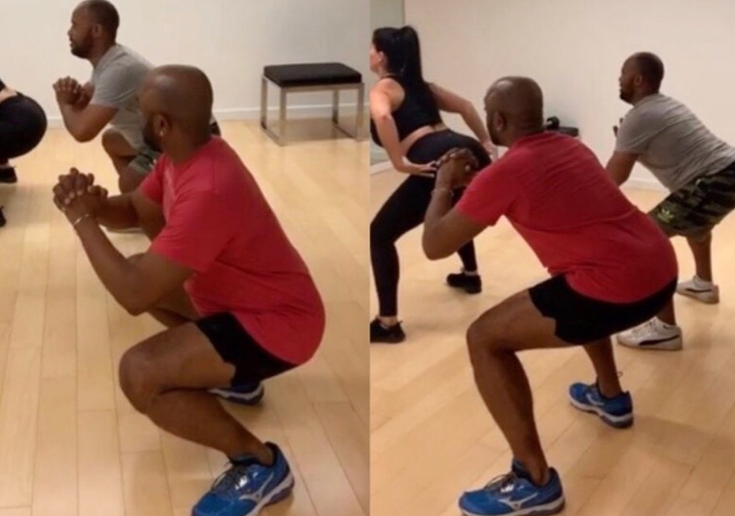
As we mentioned, the Sumo squat requires more advanced movement patterns and is not as beginner-friendly as the Goblet squat. However, with a little practice, you will be able to nail this move.
Here's how:
Step 1 - Position your feet so that they are wider than shoulder-width apart and your toes are pointing outwards in a 45-degree angle.
Step 2 - Holding a weight in front of your body with both hands, squat down until your thighs are parallel to the ground. Some people prefer to squat even deeper. But we recommend that you stop when your thighs are parallel to the ground.
Step 3 - Drive through your heels and return to the starting position. Maintain a tight core and upright posture throughout the entire range of motion. Your upper back should not slouch forward as it is a recipe for injury.
Tips to Get The Best of These Exercises
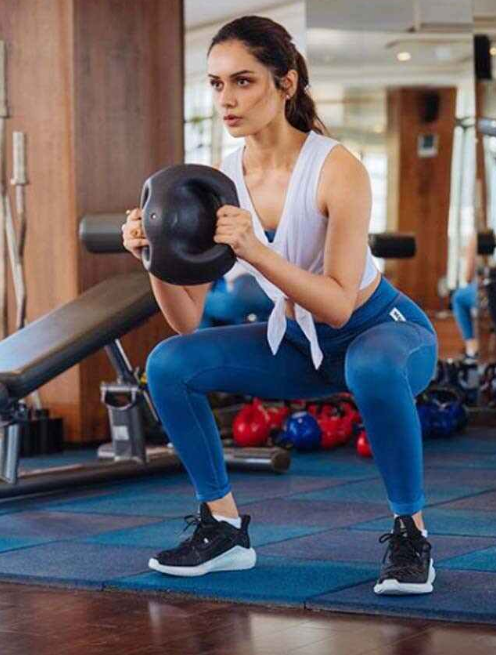
Since both these squat variations target different muscle groups, it is recommended that you include both in your workout routine, more so if you do a full body workout every other day, such compound moves are priceless.
If you are just starting out, then we recommend that you focus on the Goblet squat as it is a simpler movement to perform.
As you get stronger and more comfortable with the movement pattern, you can start adding weight and progressing to the Sumo squat.
Here are some ground rules that you can follow to make the movement easier;
The integrity of your spine

One of the biggest problems with squats is that people tend to lose their spine's integrity, during either the concentric or eccentric phase of the lift.
This can lead to back injuries.
So, make sure that you keep your spine in a neutral position at all times and do not let it round or arch. I would suggest practicing enough on your squatting skills, even if it means getting one of those budget squat power racks out there.
Your foot position

Many people try to squat too deep without proper ankle flexibility. As a result, their heels come off the floor and they start to lean forward, which is a recipe for disaster.
So, make sure that you keep your feet shoulder-width apart and do not let your knees go past your toes.
Sit back and down
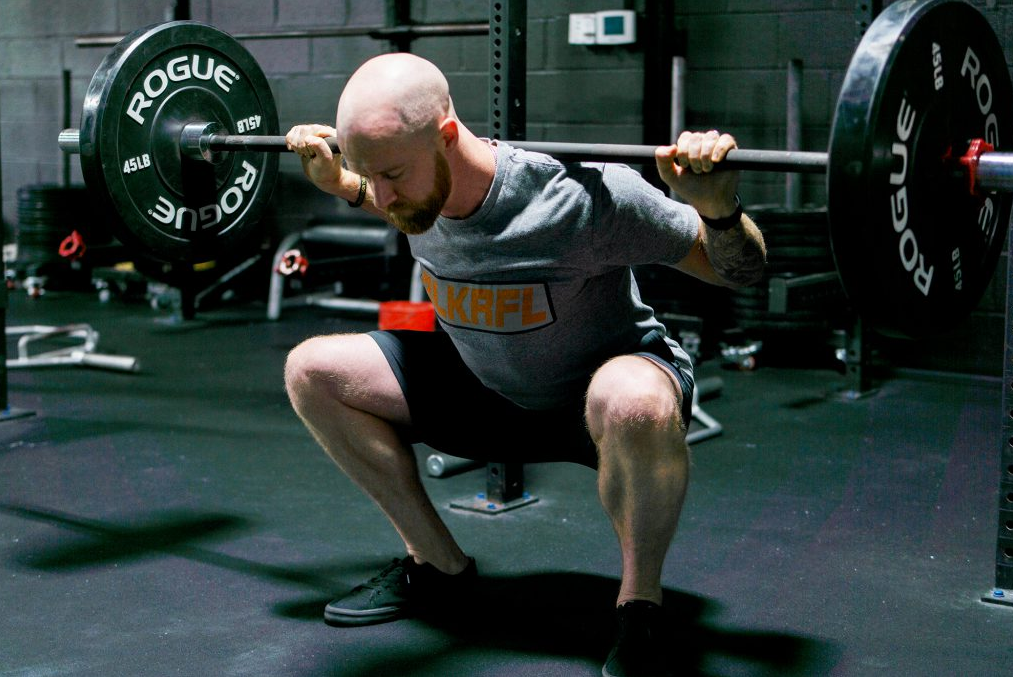
This is one of the most important cues for squatting correctly. Many people make the mistake of trying to squat straight up and down.
This can cause undue stress on the knees and can result in an injury. So, remember to sit back and down into the squat position to achieve proper depth and avoid injury.
Chest Up
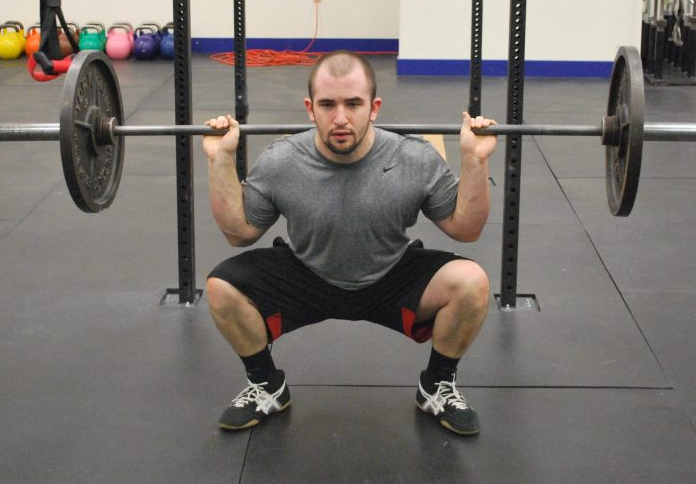
Lastly, make sure that you keep your chest up throughout the entire range of motion. This will help you stay upright and avoid injuring your lower back.
What is the difference between a squat and a goblet squat?

At first glance, both these exercises may seem the same.
However, there are a few key differences that set them apart. So, what is the difference between a goblet squat and a regular squat?
The Stance - The first difference is the stance that you take when performing these exercises.
The Goblet squat requires you to stand with your feet shoulder-width apart and your toes pointing forward. The Sumo squat, on the other hand, requires you to take a wider stance with your feet turned outwards in a 45-degree angle.
The Muscles - The second difference is the muscles that are targeted when performing these exercises.
The Goblet squat targets the quads, glutes, and hamstrings equally, while the Sumo squat targets the glutes, the hamstrings and the inner thighs more intensely, especially if you do these squats during other workouts.
The Weight - The third difference is the weight that you use when performing these exercises. The Goblet squat is relatively easier to perform and you can use a heavier weight.
The Sumo squat is a more advanced exercise and hence, will be better performed with a lighter weight.
Especially if your mobility is not great.
Muscles Worked: Goblet squat vs Sumo squat?
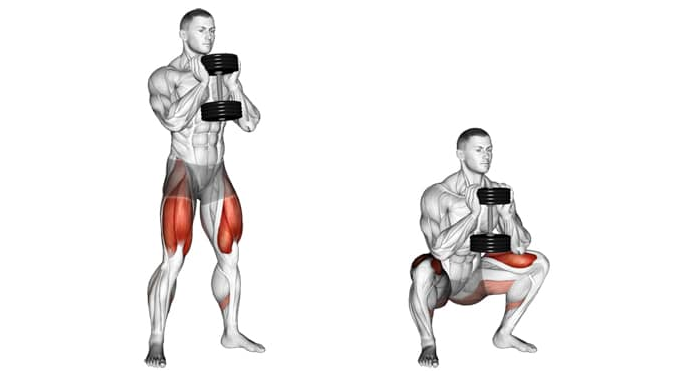
Despite the similar stance and the fact that both these exercises work the lower body, there are some key differences in the muscles worked by each of these exercises.
The Goblet Squat
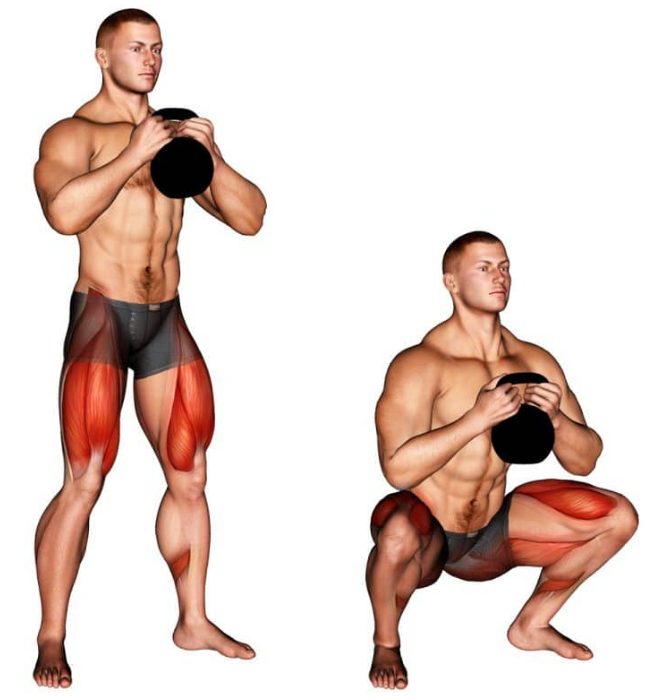
What is the goblet squat good for? You ask, well, this squat offers quite a number of benefits.
The Goblet Squat works almost every major muscle group in the lower body including the quads, glutes, hamstrings, and even the core muscles. It is a perfect exercise for those who are looking to build strength and hypertrophy in the lower body.
Here's a list of muscles that it targets primarily.
Gluteus Maximus
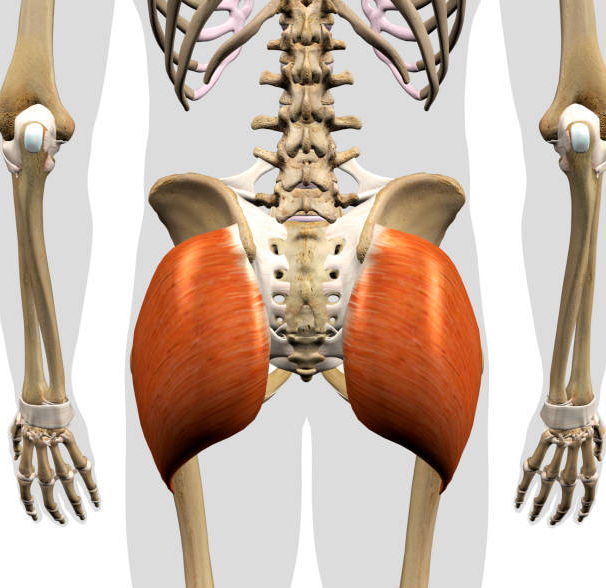
This is the largest muscle in your buttocks and is responsible for hip extension along with a slew of other functions.
Quadriceps
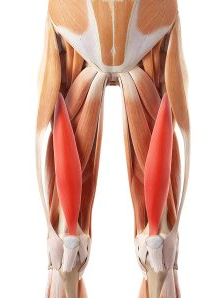
This is a group of four muscles located on the front of your thigh and is responsible for knee extension. The Goblet squat is not the best exercise for the quads.
But it's pretty close to one.
Hamstrings
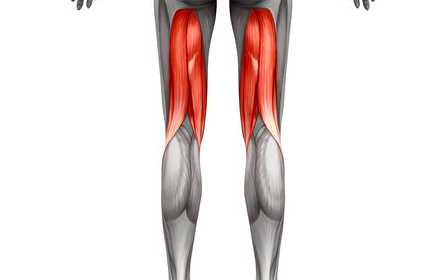
This group of three muscles is located on the back of your thigh and is responsible for knee flexion. Hamstrings affect just about every lower body movement so they are a key muscle group to target.
Erector Spinae
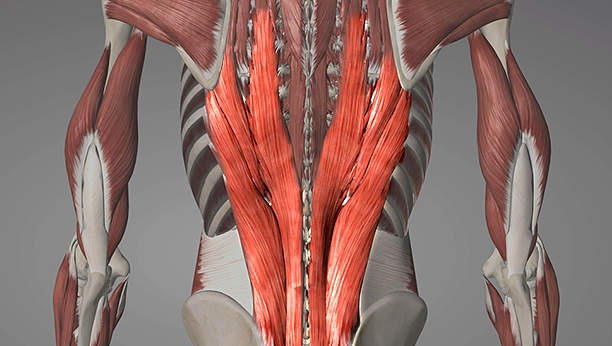
This group of muscles runs along your spine and is responsible for spinal extension. A strong erector spinae is important for posture and avoiding lower back problems while moving heavyweight.
Rhomboids
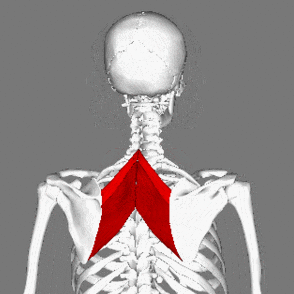
These muscles are located in your upper back and are responsible for scapular retraction. A strong rhomboid will help you maintain good posture and keep the weight off your lower back.
The Sumo Squat
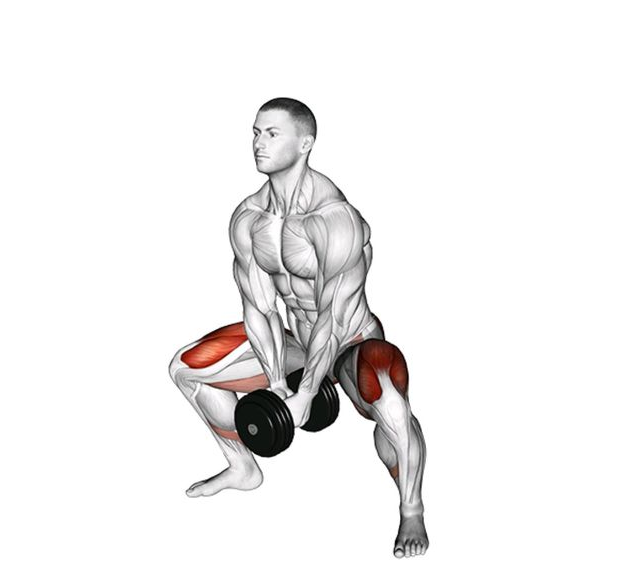
If you don't have the leg press machine or a reverse hack squat machine in your home gym, you can get as much workout with the sumo squat.
The Sumo squat is a more targeted exercise that works the glutes and inner thighs because of the wider stance and the turned-out feet. It also targets the hamstrings to a lesser extent.
Here's a list of muscles that it targets.
Adductor Muscles
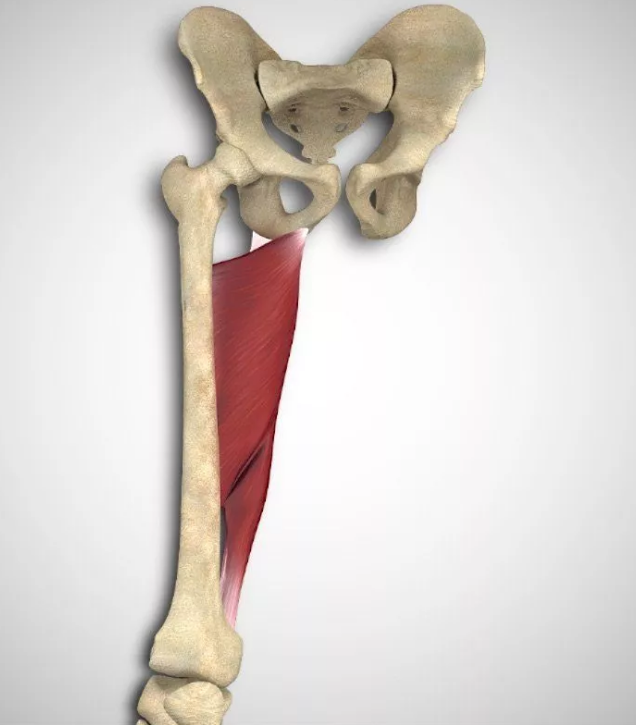
These are the muscles located on the inside of your leg, and they work to bring your legs together. Adductors are a tough muscle to isolate, but they're key players in both the Goblet Squat and Sumo Squat.
Gluteus Medius

This is a muscle on the outside of your hip that helps stabilize your hip and thigh. It's often weak in people who sit a lot, which can lead to problems like hip pain and instability.
Hamstrings
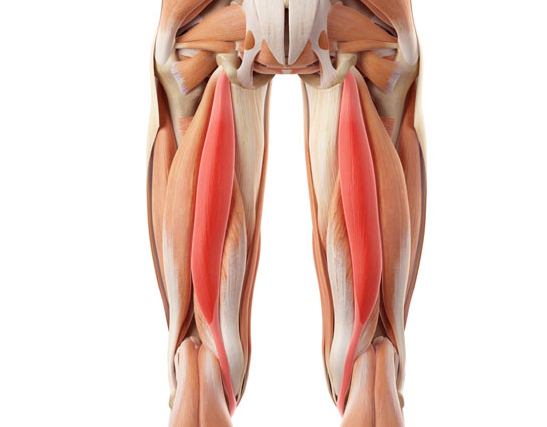
The Hamstrings are a group of muscles on the back of your thigh, and they play a key role in knee and hip extension. Tight and weak hamstrings affect mobility, flexibility, range of motion and functional fitness.
Over a period of time, they can even lead to back pain.
Calves
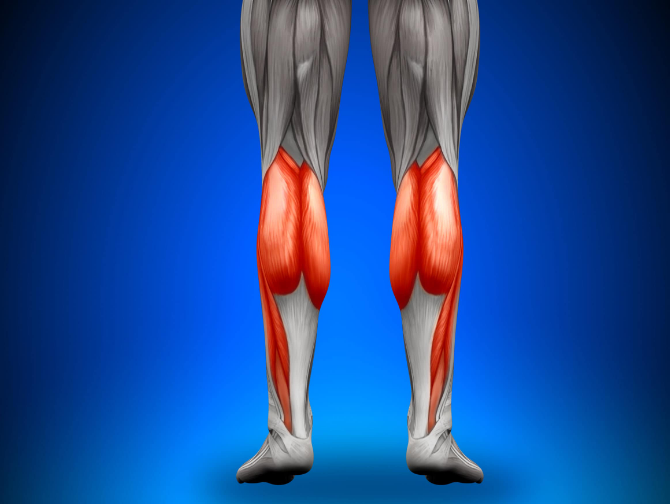
The calves are the muscles on the back of your lower leg, and they're responsible for plantar flexion (pointing your toes). While they don't get a lot of attention, the calves are important for both strength and aesthetics.
Related Readings; Good Mornings Muscles Worked
No of Sets and Reps: Goblet squat vs Sumo squat?

As is the case for any weight-bearing exercise, the ideal number of sets and reps for the Goblet squat and Sumo squat will depend on your fitness goals.
We will list some generic guidelines here, but it's always best to speak to a personal trainer or fitness coach to get specific recommendations based on your individual situation.
For athletes looking to build strength
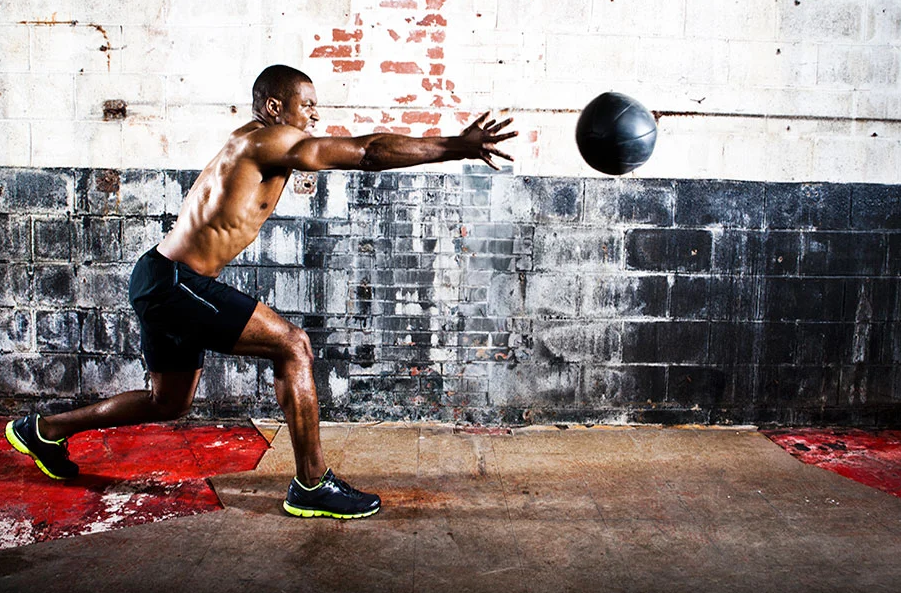
Athletes looking to build strength should focus on lower reps (3-5) and heavier weights. Around 90% of your 1RM is a good starting point.
Some athletes may want to start with a much lower weight depending on their mobility and range of motion.
For athletes looking at hypertrophy
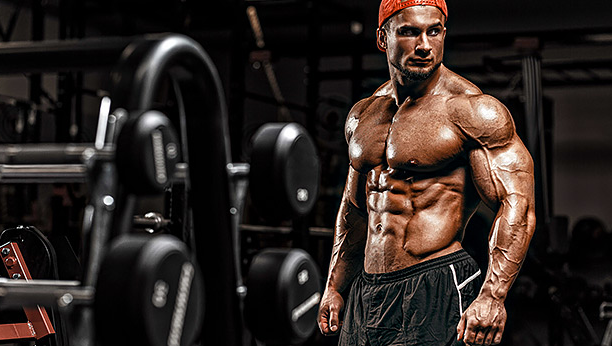
Athletes looking to build muscle should focus on moderate reps (8-15) and moderate to heavyweights. Around 70-80% of your 1RM is a good starting point.
We have used rep ranges from 8-30 while training for hypertrophy. The eventual idea should be to take the muscle to failure.
As long as your weight allows you to take the muscle to failure without breaking proper form, you will continue to see gains.
For athletes looking at muscular endurance

Athletes looking to build muscular endurance should focus on higher reps (15-20+) and lighter weights. Around 50% of your 1RM is a good starting point. You should be looking to take the muscle to failure by the end of the set.
Please note that these are just general guidelines and that your ideal number of sets and reps may vary depending on your specific situation.
Always speak to a personal trainer or fitness coach to get a more accurate rep and set range.
Benefits: Goblet squat vs Sumo squat?
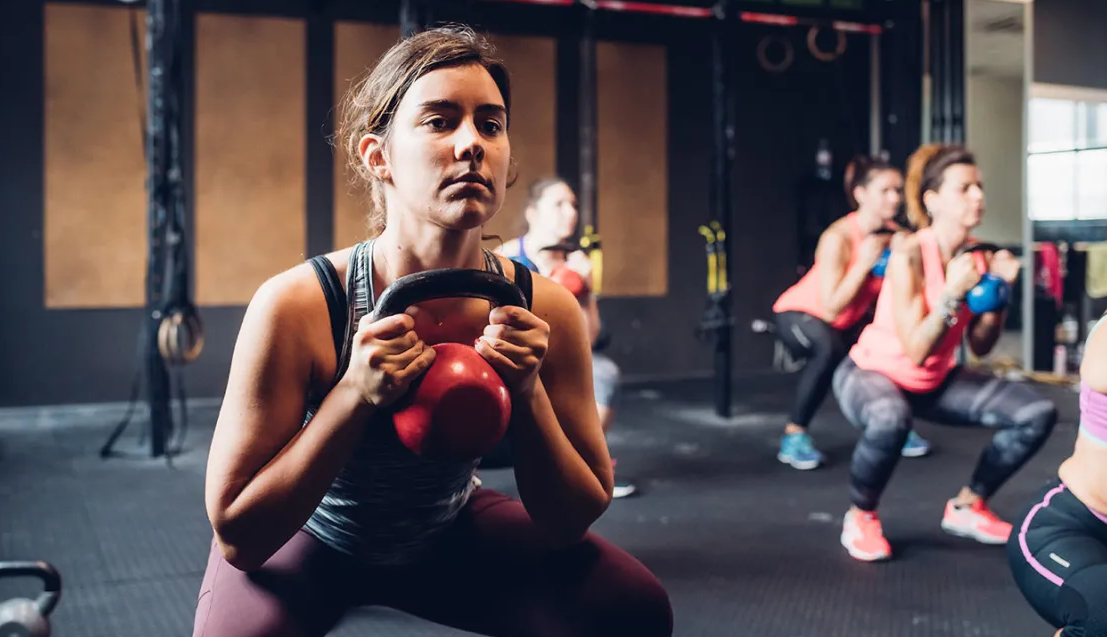
One of the questions that we hear a lot is why the Goblet squat is better than the Sumo squat, or vice versa. The answer, as is often the case with fitness, is that it depends.
Each exercise has its own set of benefits, and it's important to choose the one that best suits your needs.
On that note, let's take a look at some of the benefits of each exercise.
Benefits of the Goblet Squat:
Easy to learn - The Goblet squat is a great exercise for beginners, as it's easy to learn and doesn't require a lot of mobility or flexibility. It's also accessible since you can get started with any weight or even no weight.
Little to no back stress - Squats are notorious for causing back pain, especially if athletes lack adequate mobility. But the Goblet squat puts very little stress on the spine. This makes it a great option for people with existing lower back problems.
No spotter required - Since you hold the weight in front of you, a spotter is not required for the Goblet squat. This makes it ideal for home workouts or when you don't have a training partner.
Builds strength in the quads, hamstrings and glutes - The Goblet squat is a great exercise for building overall strength in the quads, hamstrings and glutes. It's especially effective at developing the quadriceps.
Benefits of the Sumo Squats

The Sumo squat, despite the slightly-advanced level of difficulty, is worth it as far as getting the desired results. The sumo squat has a few unique benefits that the Goblet squat doesn't offer.
Easier to go deep - The Sumo squat is a great exercise for building mobility and flexibility in the hips. This is due to the fact that you start in a much wider stance, which allows you to go deep into the squat.
Works the inner thighs - The Sumo squat is particularly effective at working the inner thighs. This can be a great exercise if you're looking to target this specific muscle group.
Can be done with heavier weights - Since the Sumo squat allows you to use heavier weights, it's great for athletes looking to build strength. You can use a weight that's around 95% of your 1RM to really isolate the adductor muscles.
Increases hip mobility - The Sumo squat helps to increase hip mobility, which can be beneficial for a number of different athletes. This includes those who play sports that require quick changes in direction, such as basketball or football.
Low-stress variation - Just like the Goblet squat, the Sumo squat is a low-stress variation of the traditional back squat. This means that it's gentle on the spine and can be safely performed by most people.
Can Goblet squat and sumo squat can both be part of a workout?

Absolutely. We have designed workout programs that include both, depending on the specific goals of the athlete.
If you have been benching more than you squat, for instance, these two would make for a great addition to your workout regimen.
For example, an 8-week Strength Program that we created for Rugby players includes the Goblet squat as a key exercise for weeks 1-3 and the Sumo squat for week 5-8.
The reason for this is that we want to gradually increase the load on the athlete's body, and using different exercises, rep ranges, training volume and intensity helps to achieve this goal.
But whether or not YOU should include both exercises in your workout program depends on YOUR goals.
FAQ
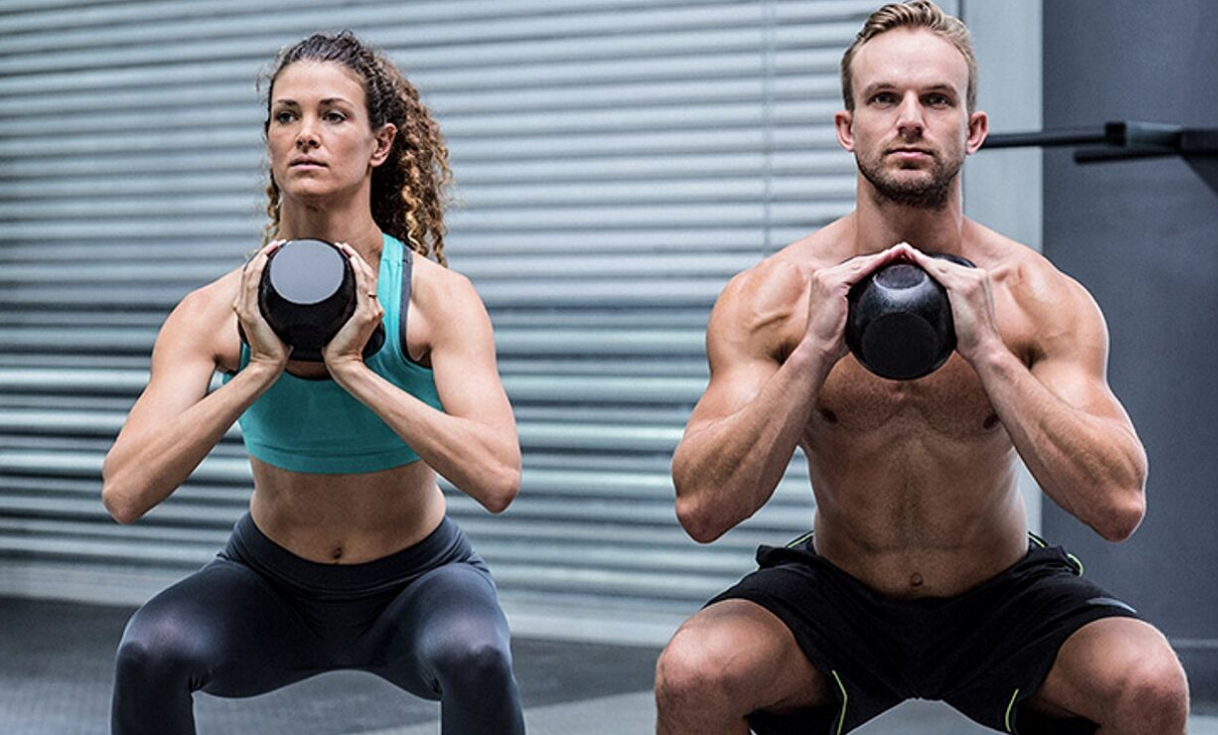
For those who want to know more about sumo squats and goblet squats, here are some more handy tidbits that I found worthy mentioning.
Q. Goblet Squat vs Sumo Squat - Which is more effective?
A. It's impossible to say which is more effective, as it depends on your specific goals. If you're looking to build strength, the Sumo squat is a better choice. If you're looking for an exercise that's easy to learn and puts less stress on the spine, the Goblet squat is a better choice.
Both are very effective at building overall strength and can be a part of a well-rounded workout program.
Q. What is the difference between a squat and Sumo Squat?
A. It's pretty simple actually. With a conventional squat you need to keep the stance close with the feet facing straight ahead or pointed outside slightly. When doing the sumo squat, however, the stance has to be wide and the feet facing outwards. The change of feet position with the sumo squat creates a new set of challenges, meaning your muscles have to work harder.
Q. Why are Sumo squats harder?
A. That's a difficult question to answer as it depends on the individual. Some people find the Sumo squat more challenging because of the wider stance, which requires more mobility in the hips. Others find it more challenging because it allows you to use heavier weights, which can be difficult to control.
Q. Goblet squat vs Sumo squat: Which is better for knees?
A. Both these exercises are excellent for strengthening the knees. However, if you have existing knee problems, we recommend avoiding the Sumo squat and sticking to the Goblet squat, at least until your knees have healed.
Q. Can Sumo squats help with sports?
A. Yes, Sumo squats can help with a variety of sports. They increase hip mobility, which can be beneficial for athletes who require quick changes in direction. They also help to build strength in the adductor muscles, which can be beneficial for sports that require quick starts and stops, such as football or basketball.
Q. What muscles do sumo goblet squats work?
A. While each of these workouts work various muscles independently, they also target similar groups of muscles like the inner thighs, quadriceps, as well as posterior chain muscles.
Related readings;
- One Punch Man Workout – I Did 100 Pushups, 100 Sit-Ups, and 100 Squats for 30 Days – Results and What I Learned!
- The Best Full-Body Workout Machines For Home Use – Top Total-Body-Toning Equipment
- Weider Ultimate Body Works Exercises – Chart, Images, Demonstrations, & PDF Download Available
- Hack Squat Alternative – The 8 Best Substitute Exercises
- Best Lat Pulldown Machines of 2022
- How I Got a Bubble Butt: My Story, Personal Strategy, Secrets
Resources:
Ben Mayz
Hi there! I'm Ben, main author and chief editor at Fitlifefanatics.com. I have been obsessed with Strength Training and Fitness for 18 years now.
My passion for living a happy fit lifestyle is what made me realize that fitness is what I wanted for my future.
I went on to earn my Masters in Sports Training & Biomechanics.
My passion for Strength training & fitness and my love of helping others is what made me start Fitlifefanatics.
Here, myself, and a team of specialist aim to provide the most accurate, and actionable information possible in hopes to help foster the fitness community forward.
You can learn more about Fitlifefanatics on our About Page

